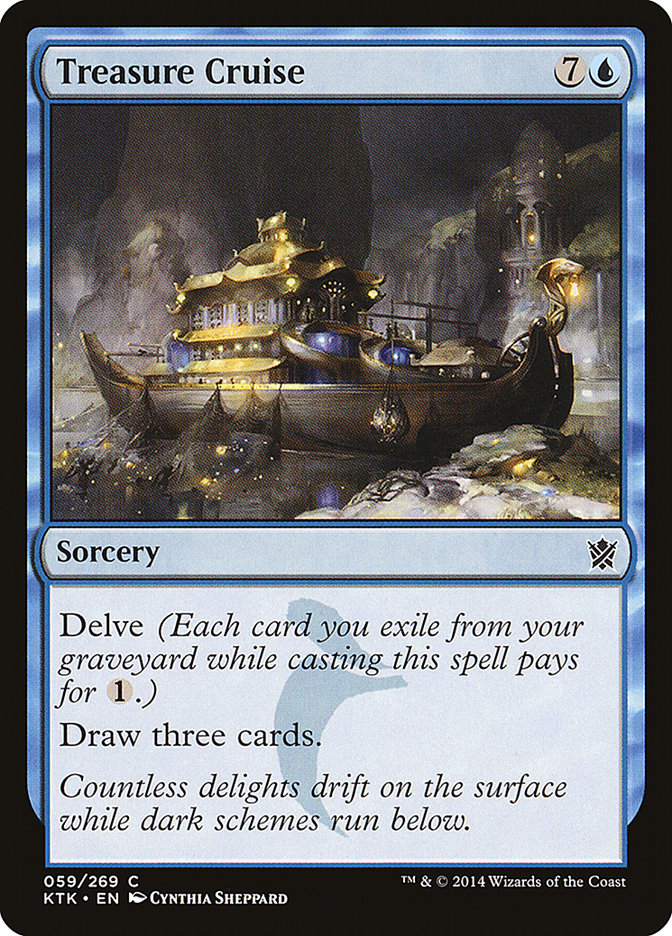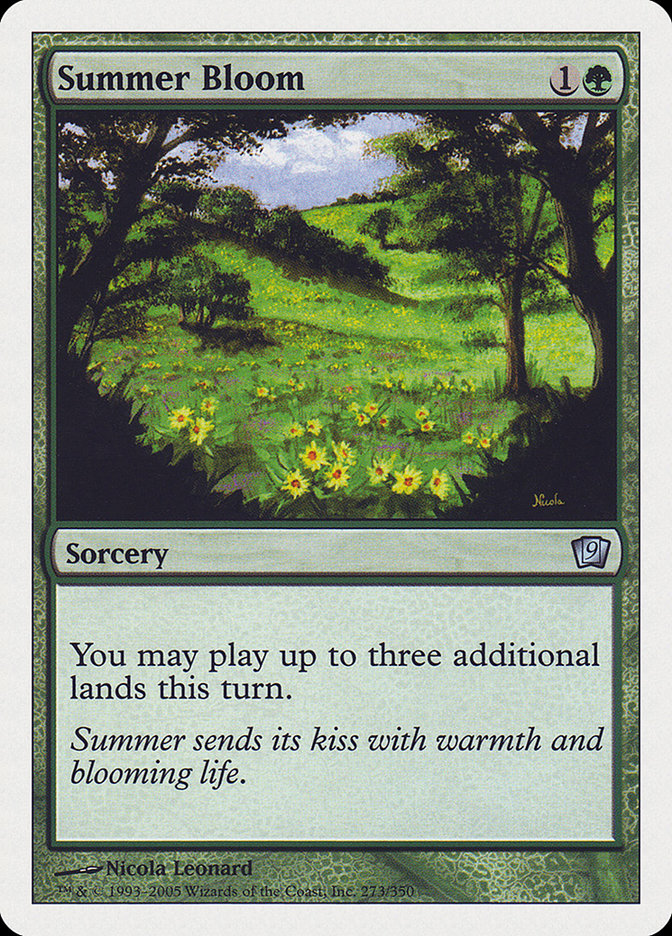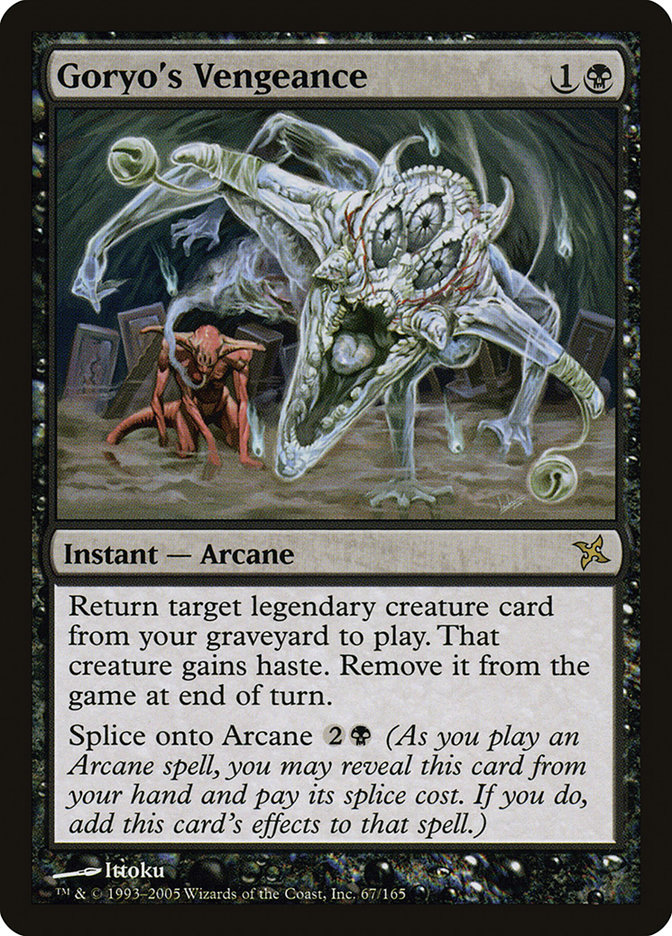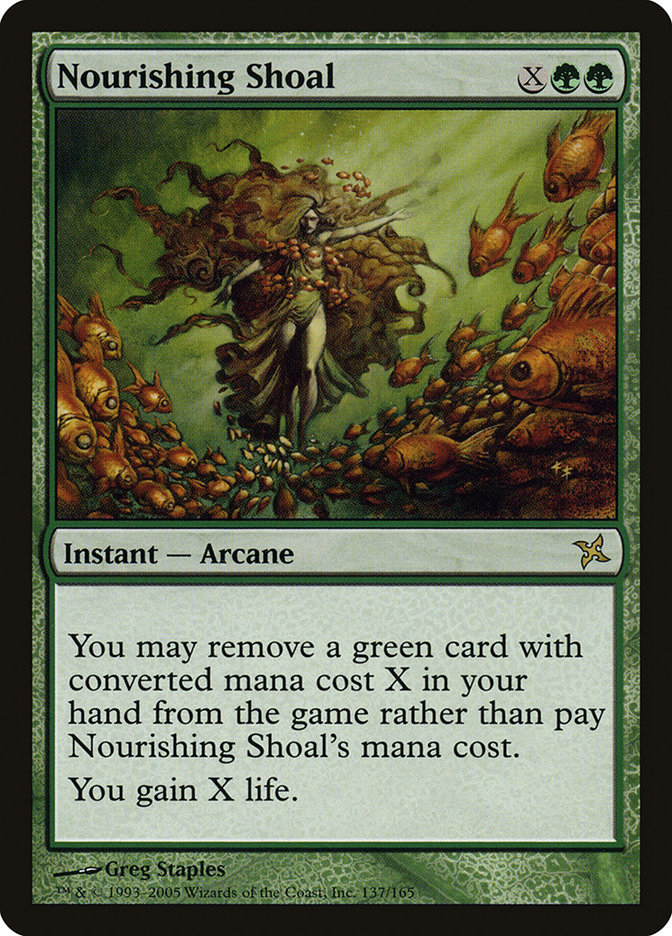Modern is a strange format that offers much that Standard can’t, while being more accessible than Legacy. It has grown into something that I love, and in return I’ve grown remarkably attached to its health. Over the years since its creation, the banned list has grown, and countless articles have been written about those cards that have left the format (likely for the better).
In an ideal world, Modern would be a place where we got to play whatever our hearts desired. But history has proven that sometimes the folks at the top make a mistake. Or, at the very least, they take a chance. Sometimes those chances end up making the format more enjoyable, but occasionally we get stuck playing a broken format for a few months before something hits the dirt.
I think both of those cards are fine in Standard, and it is pretty selfish to think that every single card ever printed should be made with Eternal formats in mind. There are too many cards in Magic to catch everything, and eventually something new will come down the line that interacts a bit too well with an existing element or mechanic. When this happens, WotC has been pretty aggressive recently when it comes to fixing their mistake.
I don’t think it really surprised anyone that these two cards got hammered. It probably did surprise some people that Dig Through Time wasn’t banned in Legacy alongside Treasure Cruise, but that’s a different story for a different day.
The point here is that banning a card implies admitting a mistake, and it makes me happy that they are willing to admit these mistakes and correct them in a timely fashion (with the release of the very next set). I don’t need Treasure Cruise to win a tournament to understand how it fundamentally breaks the rules of a format, just like I don’t need someone to tell me that Dark Ritual is a powerful Magic card. When you’ve played long enough, seeing that stuff is pretty easy.
So where are we at now?
Staying The Course
What’s really interesting to me, and why Modern is such a great format, is that new decks continue to emerge. In the last year and change, we’ve seen both Summer Bloom and Goryo’s Vengeance bring new life to combo decks. But these cards have been around forever, and it is quite shocking to see such powerful interactions emerging so late in the format’s life when they could have been discovered much earlier on. I suppose that can be somewhat attributed to the popularity of other cards that possibly overshadowed them at some point, like Cloudpost, that were then ultimately banned.
Banning (and even unbanning) certain cards can be a very positive thing for a format’s health, but it can also have unforeseen consequences. When you get rid of an existing menace, it leaves a power vacuum. Ideally that void will be filled with a good mix of cards and decks, but the cold hard truth about Magic is that there will almost always be a “best deck” regardless of how much you toy and tinker. The only reason Legacy continues to thrive is that it has ever-present tools to keep some of the more degenerate things in check. And even if you aren’t using those tools, like Force of Will, many players will shy away from those “glass cannon” archetypes because they don’t want to lose to the people who do play Force of Will.
And such is the cycle.
Modern doesn’t quite have that equilibrium, and the general idea many people have about Modern is something akin to the Wild West. Without a card as rock-solid as Force of Will to keep certain things in check, combo decks that are too fast or too powerful will prey on nearly every strategy. The good part about Modern is that many of those decks have specific weaknesses which can be exploited with sideboard options. The issue with this is that we only have access to fifteen sideboard cards, we don’t have great options for card selection, and it isn’t all that difficult to figure out what your opponent is going to bring to the table. In turn, the combo decks will fight back; often they will win if they know what they’re doing.
Splinter Twin is a very obvious example of a combo deck that knows how to change gears, it can easily figure out how the opponent will approach the next few games and change how they interact in order to best match them. But Splinter Twin is also the poster child for Modern since it doesn’t break any of the core rules. Let’s go over those rules, and then talk about what cards and decks currently exist in Modern that aggressively break those rules.
1) Diversity
If Modern is not diverse, the goal is to constantly assess what is keeping it from being diverse. At one time, that meant giving Jund the cold shoulder, banning Bloodbraid Elf and ultimately Deathrite Shaman. Overly-efficient creatures made Jund into an oppressive enemy that continues to thrive even though these cards are no longer legal. Punishing Fire was also a major offender here, invalidating any deck that played small creatures.
Birthing Pod, a recently banned card, was keeping Jund in check with resilient threats. And the banning of Birthing Pod left a vacuum for Jund to fill. Potent disruption paired with efficient creatures will always be a viable option for older formats, because they have a fair shot at beating just about any deck. But Jund isn’t nearly as oppressive as it once was. A lot of strategies remain viable in spite of Jund’s comeback tour, which leads me to believe that Jund wasn’t ever all that oppressive in the first place. It was just a great deck that too many people played, and it resulted in a format that was incredibly polarizing.
2) No Consistent Turn Three Kills
Rite of Flame and Seething Song were both banned under the assumption that they allowed Storm to kill you too quickly. Those draws were certainly possible, and they happened a bit too often for my taste, but Storm was never truly dominant in Modern. This is the biggest point I want to hit home for those of you reading this, because the two cards listed above clearly break that rule. And in many ways, they are more consistent turn three-kills than Storm ever was.
One major argument I see in favor of Summer Bloom is that Primeval Titan rarely kills on turn two or three, but it does often cast Primeval Titan on turn two or three. “Just kill it with Terminate or something similar, like Deceiver Exarch.” One problem here is that Primeval Titan can search up Tolaria West and Simic Growth Chamber, which leads to more copies of Primeval Titan through Summoner’s Pact. Even if you aren’t actually killing someone on the second or third turn, there is such a thing in Magic as a virtual win, and Summer Bloom allows for those more often than I’m comfortable with.
But mostly, Summer Bloom is just a non-interactive combo deck that most people who play Modern would rather not have around. Is it really all that interesting to watch a deck play solitaire? Don’t we want to encourage interaction as opposed to discourage it? Don’t we also want combo decks in Modern to be attacking on a level people are naturally inclined to fight? Land-based combo decks involving Cloudpost weren’t allowed to linger in Modern for very long, and for good reason. Even though they weren’t winning the game early, they pushed a lot of interesting strategies out of the format, similarly to Jund’s offenses. This is also why Punishing Fire was banned.
When a card or deck is so powerful that it invalidates half the field, it shouldn’t exist. They’ve shown us that this is how they want things to be, and it was baffling to wake up this past Monday morning and see that Summer Bloom was still legal in Modern. Goryo’s Vengeance also breaks this rule, since it combines so fluidly with Griselbrand, but at least it is easier to interact with graveyards than your opponent’s lands.
3) Keep It Fresh, Keep It Fun
This method is usually implemented with unbanning certain cards to “mix things up.” As we’ve seen with Wild Nacatl, Bitterblossom, and Golgari Grave-Troll, this is rarely dangerous because they’ve put a lot of thought and testing into seeing if these cards would be too good. So far, Scapeshift has been the only unbanned card to see regular play in Modern, but it fits the criteria almost perfectly for a combo deck. It isn’t oppressive, it doesn’t win early, and it can be disrupted on a number of levels (counterspells, discard, land destruction, even lifegain).
With older formats, it isn’t always easy to keep things changing. In Standard, every new set is designed to have a reasonable number of impactful cards. That can’t always be the case for Modern or Legacy, as printing cards that could be great in those formats without breaking Standard is tough. On occasion, some cards or mechanics line up well with old cards without being too much trouble in Standard and we end up getting a new staple. Some are a bit warping, like Treasure Cruise and Dig Through Time, but those are easy to identify and correct.
If Modern doesn’t change from time to time, using the ban list as a tool to promote growth is important. They’ve shown us they are willing to use it and have done a pretty good job with it thus far. They don’t want all decks of the same color to do the same thing. That’s one of the reasons why Green Sun’s Zenith was banned. That’s also one of the reasons why Snapcaster Mage should have a big target on its head, though (to me) it seems to be the only reason to play blue at the moment.
Ultimately, if people aren’t having fun in Modern, or playing the format in general, then something has to change. Right now Modern is more popular than ever, and I expect that trend to continue. But I don’t want it to continue in spite of certain decks being overly powerful or tough to interact with. I want a pre-emptive strike instead of waiting for things to get worse. I mean, do you really expect someone new to Modern (or Magic) to keep playing after their opponent kills them with Nourishing Shoal?
Finger On The Pulse
I want vigilant justice, and I want it to be swift.
Not to be confused with what Batman does, I want the folks at WotC to intuitively interact with the wants and needs of the Modern community. It can’t be easy to be outside of the box looking in and know exactly what’s going on. After all, if you’ve never played against Summer Bloom or Goryo’s Vengeance, that feeling of helplessness is pretty difficult to describe. To a lesser extent, Urza’s Tower and its siblings give me a similar feeling. And in actuality, big-mana decks like Tron or Summer Bloom push a lot of decks out of the metagame.
Creatures (7)
Lands (27)
Spells (26)

The only thing holding Modern together right now is that getting access to Modern cards is actually pretty difficult and expensive. If everyone who attended Grand Prix Charlotte owned every single card in Modern, I think it would be pretty easy to ban Summer Bloom. Card availability is an issue in Modern the same way it is in Legacy, if not to the same extent. But lack of access should not be a reason to keep something around. Summer Bloom isn’t winning every tournament because it isn’t as popular as the various Snapcaster Mage decks in the format. Very few cards from the Amulet deck cross over into other decks, making them less desirable for purchase. On top of that, we seem to have a chicken-and-the-egg predicament.
If there was no fear of Summer Bloom getting banned, it would be more prevalent. If it was more prevalent, it would win a lot more tournaments. And if it won more tournaments, it would be banned. Many players who want to play Summer Bloom are afraid of purchasing it because they don’t want their investment to become worthless.
Goyro’s Vengeance is a much different story. I honestly thought that Goyro’s Vengeance broke the rules of Modern for a long time, but then they went ahead and made Griselbrand the Grand Prix Promo card so I can only assume it won’t be banned for a while. The argument I keep seeing in favor of leaving Goryo’s Vengeance alone is that it isn’t consistent. I can attest to that sentiment, having tried many variations of the deck. Necrotic Ooze, Fury of the Horde, Soul Spike, Breaking//Entering. None of them felt consistent enough to worry me.
But this new version feels like an entirely different animal.
Creatures (14)
Lands (19)
Spells (27)

But let me tell you, dying on turn two before you play your second land is just embarrassing. It isn’t Magic. And it isn’t that difficult to assemble. The older versions of the deck couldn’t assemble the combo quickly enough on a consistent basis to keep up with the slightly slower, more consistent decks in Modern. Luckily, someone figured out this card was legal.
First off, let me point you to the fact that Nourishing Shoal is Arcane. Goyro’s Vengeance and Through the Breach have Splice onto Arcane. This means that it will be pretty easy for them to resolve one or the other eventually through a slew of counterspells. And even more disgusting is the fact that Through the Breach is actually cheaper when you Splice it.
Now that someone (thanks, Bob Huang!) has discovered a way to fit Nourishing Shoal into the deck, you don’t actually have to combo all that quickly against normal non-combo decks. Nourishing Shoal, when paired with a gigantic green creature (namely Worldspine Wurm) can buy you the time you need to find combo pieces while doubling as a ridiculous enabler for Griselbrand. This version of Goryo’s Vengeance makes Necropotence look like a joke. I mean, if Yawgmoth’s Bargain is banned in Legacy, why is something so similar, and so degenerate, legal in Modern (or in Legacy for that matter)?
The answer is: “because you usually have to use the graveyard to enable the combo.” I say “usually” because the deck also runs Through the Breach. While slower than Goryo’s Vengeance, and by no means too strong on its own, Through the Breach enables the deck to attack from two different angles. Against this iteration of Goyro’s Vengeance, you can’t just beat them with Relic of Progenitus.
And did I mention they can kill you at instant speed?
Don’t blink.
Blink and you’re dead.
Don’t turn your back.
Don’t look away.
And don’t blink.
Good Luck.
When your opponent has Griselbrand in their graveyard, or if they have access to five mana, you can’t tap out ever again. And that’s only if you have a counterspell at the ready. Otherwise, you have to kill them before they assemble their combo, through potentially multiple copies of Nourishing Shoal, or find a way to crush their entire game-plan.
When looking at whether or not a card or deck should be examined for a ban, it is important to understand the context surrounding the card(s) in question. I play a lot of Modern. I’ve always played a lot of Modern (and Legacy), because I enjoy playing with older cards. I like seeing new toys clash with old ones. I like to see sweet interactions, but I can also recognize pretty easily when something is degenerate to the point it shouldn’t be around anymore.
Some people will be upset with these bans. But hell, when someone who plays and writes about the deck is advocating for a ban (CVM), that’s a pretty big red flag. But not everything is black and white, and not every situation has a reasonable answer. And honestly, there could be a major change to Modern coming down the woodwork that would fix all of these problems, like rotating out the Eight and Ninth Edition Core Sets. We just don’t know what they’re going to do until they do it, and we have to keep faith that they’ll make the right decisions even if we don’t entirely understand them.
Trust
As long as WotC keeps showing us they’re invested in the format’s health, I’ll keep an open mind on their decision-making processes. I still enjoy playing Modern as a format, but it doesn’t take much for me to get sour and ignore it for a while. Treasure Cruise made me take a step back from it for several months, and I only played a single Modern tournament the entire time it was legal. That is not something I want to experience again.
Over time, WotC has given me little reason to doubt them when it comes to the health of formats, as they take into consideration all sorts of data when making such decisions. And even if we aren’t aware of the reasons behind those decisions (or lack thereof), we have to give them the benefit of the doubt. If we don’t, it is a slippery slope to banning basically every good card in the format until we’re left playing Squires. And at that point, Brian Braun-Duin would be the only happy one in the bunch.
If I were in charge, and still only had the limited amount of information I currently have access to, I would ban them both, but only because that’s how they’ve outlined what they want Modern to be. But I don’t have that power, and this is all just an opinion. I am fully aware that I could be wrong, and would love to hear your ideas about the matter.
I’m not screaming at WotC to ban Goryo’s Vengeance and Summer Bloom. I’m saying I would like to hear the reasons why they didn’t. Consistent contact between the DCI and the player base is something that should be taking place even if there are no changes to the current ban list. If something is “on the watch list,” then I think they should tell us so. If they want to gain our trust, then I think it only fair that they hear what we have to say too.
We’re all in this together.





